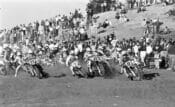Japan’s popular ADV bikes get the spotlight.
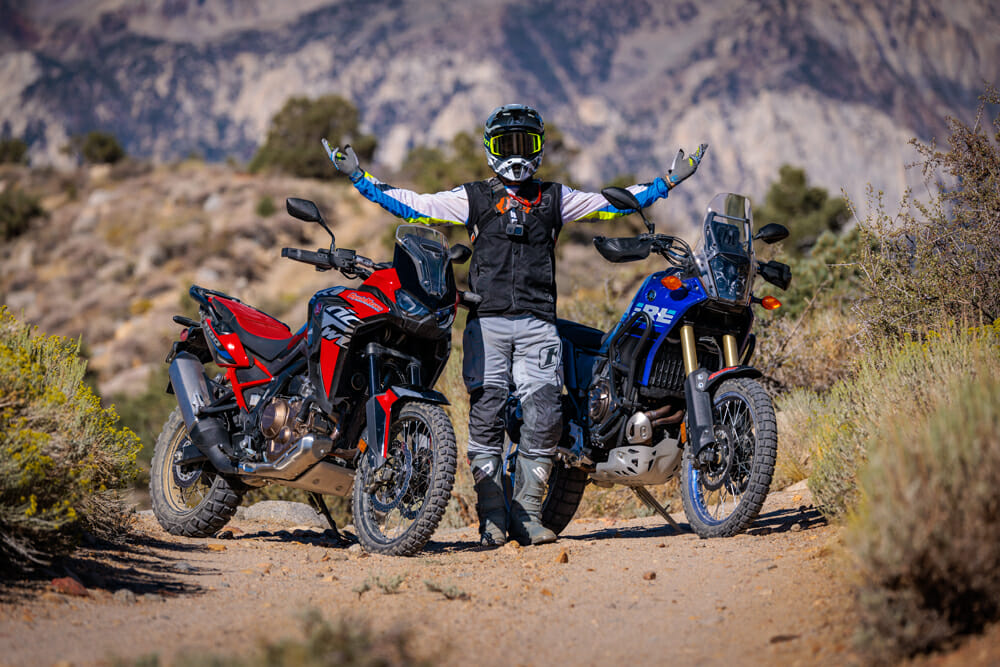
Photography by Simon Cudby
There is an unofficial class system in the ADV motorcycle world. Bikes are grouped into entry-level, midsize, large displacement, etc. They’re not necessarily standardized across the motorcycling industry, but most bikes you’re considering for ownership should slot into a position on this categorical breakdown of engine size or best use case.
Then, there are some bikes that refuse to fit in. On paper, sure, they seem like a midsize or large displacement weapon. But when you throw them into a comparison or start digging deeper into performance, inclusions and capabilities, they reside outside the norm, on one end of the spectrum, above or below the rest, and almost incomparable in the aggregate.
So, the questions arise—are these fringe bikes over-achievers or under-performers? We’re spotlighting two in this story to try to find out!
VIDEO | Honda Africa Twin & Yamaha Tenere 700 Comparison
Video by Simon Cudby
Why These Two?
Honda Africa Twin vs. Yamaha Tenere 700
The Honda Africa Twin and Yamaha Tenere 700 are two of these “betweener” bikes. They shine in isolation, lead in the segment with undeniable value and dependability, and are brand-fan favorites. They are also the two most popular multi-cylinder Japanese ADV bikes. Those are a lot of attractive reasons to buy here. However, we are constantly struggling to include them in our larger-scale comparisons. And boy, do we hear about it in the YouTube comments.
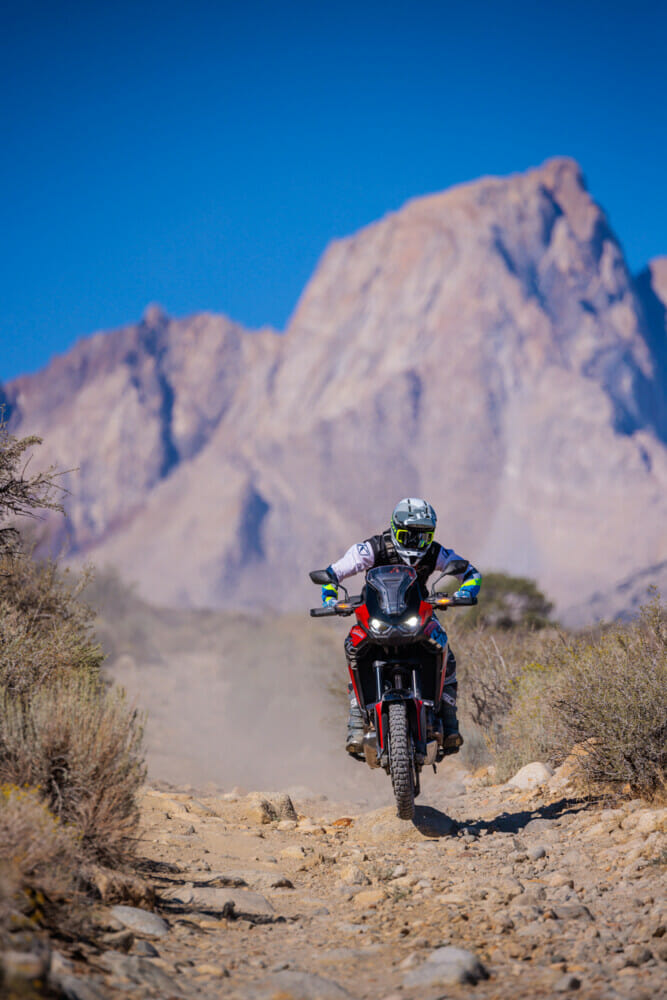
We’ve stacked them up against class leaders in the past, and since they’re both on the smaller-displacement scale in their respective segments, they seem to underwhelm in a testing environment on outright power performance. The results of those comparisons reflect this. Is that a fair assessment of their quality or value?
Image, as an Africa Twin, giving up 200-plus cc’s to a KTM 1290 Super Adventure R and expecting to be competitive across a California desert highway? The Tenere 700 fights the same uphill battle in the midsize world with a 200cc deficit to the KTM 890 line. When you’re running the gamut of testing scenarios on these bikes, starting in a power-hole isn’t ideal.
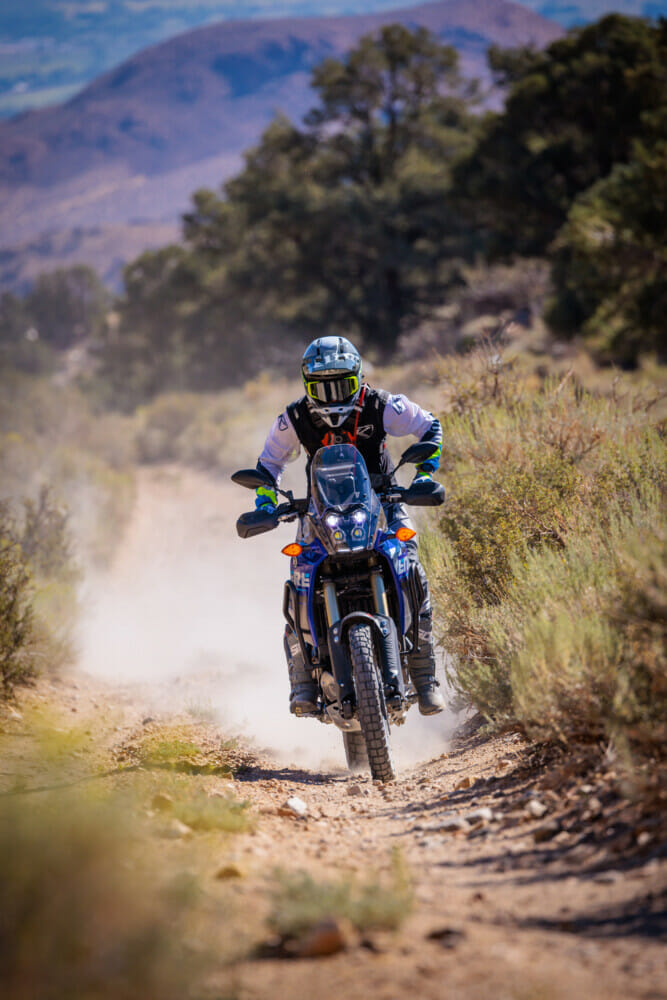
Likewise, in the Tenere 700’s case, a simpler, no-frills, analog riding experience can seem amazing in isolation and almost comforting in consideration. But, when pitted head-to-head against advanced electronic riding and comfort aids, it can also seem lacking. You don’t know what you’re missing until it’s gone and having a dashboard screen you can see in direct sunlight on a dusty road is nice. The T7’s dash is not. Bluntly, when the T7 is ridden back-to-back with advanced tech carrying ADV machines, its absence in the world of modern riding electronics is noticeable.
It’s not like we can put an Africa Twin down a class into the midsize segment. And we’ve already put the T7 up against every other midsize ADV bike, including single-cylinder machines like the **Husqvarna 701.** https://www.cyclenews.com/2021/01/article/yamaha-tenere-700-vs-husqvarna-701-enduro-lr/
So, we’re riding these two bikes together, in isolation from the rest, to find out how they perform in their own class we’re calling The Outliers. This is an unbiased look at the performance of two machines that have sometimes been left out simply by their build specs.
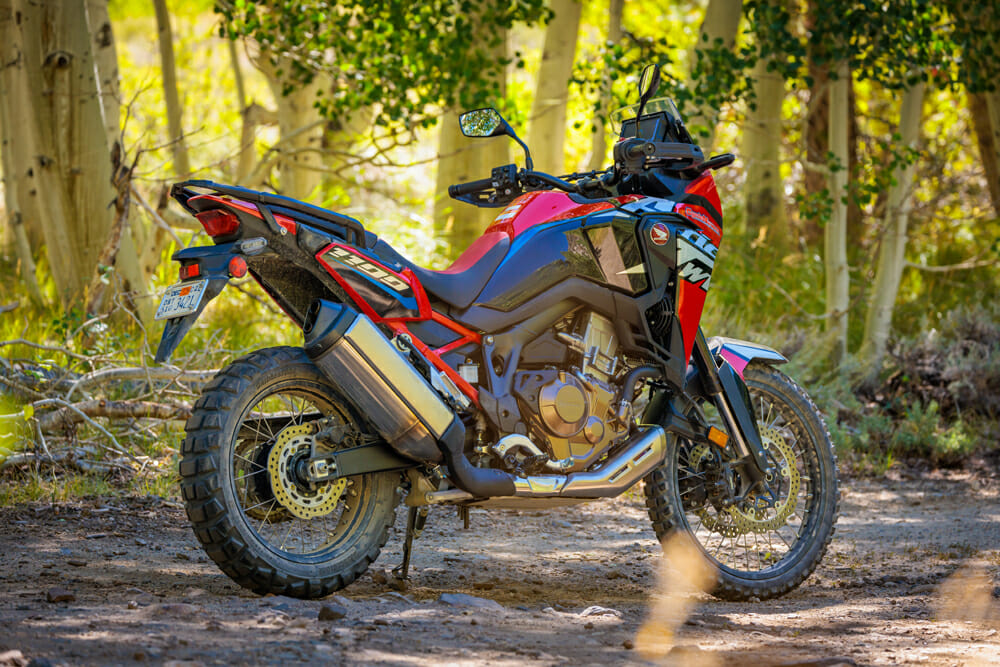
Honda Africa Twin Breakdown
Honda Africa Twin vs. Yamaha Tenere 700
The Honda Africa Twin came stomping back into the North American market in 2016 with force. Its full-size capability and the simple, no-frills interface were a fresh take on full-size ADV. Powered by a 998cc parallel twin, the CRF1000L was refreshing. We picked it over KTM’s 1190 Adventure R as our preferred bike that year since it was easier to ride all-around, didn’t overheat the pilot, was overall less intimidating, and had great suspension. It also had a simple electronic package that included one button to turn the rear ABS off for off-road and three levels of torque (traction) control adjustment on-the-fly. Simple, awesome. That was the Africa Twin.
Then, they seemed to start chasing things a bit. 2018 saw an update that included wiping the slate of easy electronics off the table and introducing a pile of options. A six-axis IMU, eight (eight!) levels of HSTC traction control, and three levels of power delivery. It also received three modes of engine braking adjustment. All of these come together in three ride modes and one custom user mode you can build. It was now throttle-by-wire controlled. It was the beginning of the end of simple Africa Twins.
Finally, the 2020 updates came with the 1084cc engine we still have and four preset riding modes, two custom modes, wheelie control, cruise control, Apple CarPlay integration, and more. Engine output was necessary for Honda to get ahead of Euro5 emissions regulations, but we were still sort of turned off by the complicated-to-run electronics just as the competition was delivering more (cornering ABS) that was easier to control via sleek user interfaces.
Now, right on cue for the two-year update cycle, we have the 2022 Africa Twin. This year Honda brought little changes. The AT now has Android Auto connectivity and a new bolt-on subframe with more strap-down points.
The 2022 Honda Africa Twin (standard we tested) MSRP is $14,499.
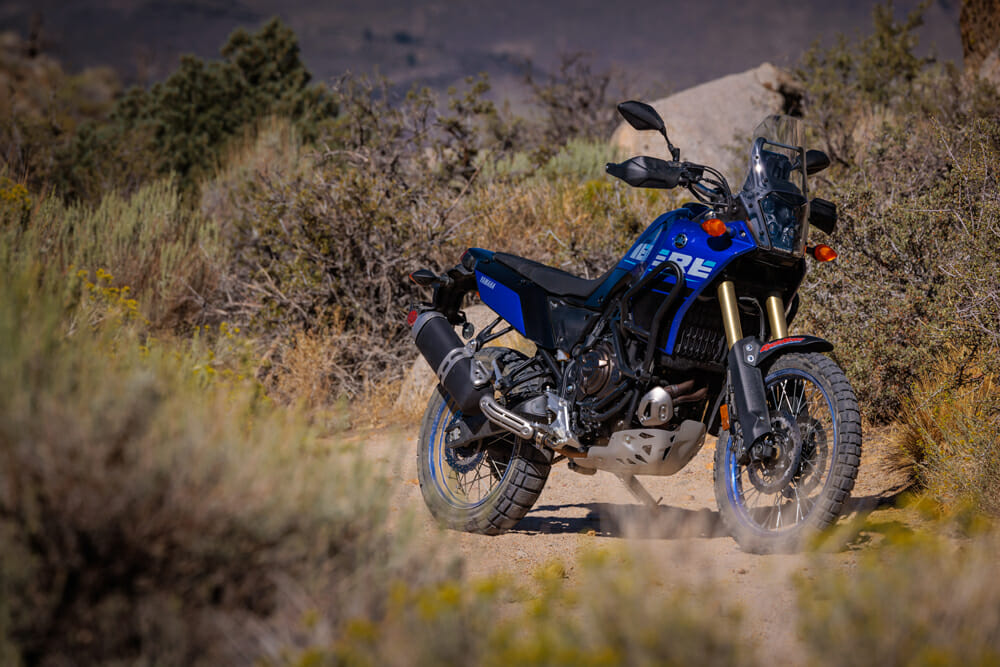
Yamaha Tenere 700 Breakdown
Honda Africa Twin vs. Yamaha Tenere 700
Nothing is simpler than a Yamaha Tenere 700. And it hasn’t changed a lick since we rode the first North American version in 2020. A cable-operated throttle body controls fueling for a 689cc CP2 parallel twin engine. There is no traction control other than your right hand and the engine’s fantastic torquey smoothness. There is an on-road ABS setting that can be turned off (rear wheel) by pushing the single mode button on the aging, grayscale electronics dashboard. It is simple in all areas down to the tubes in the tires. It is a basic travel motorcycle, which is why it’s so loved in the market. Tenere 700 owners don’t (think they) need any of that fancy electronic garbage to improve their ride.
The 2022 Yamaha Tenere 700 MSRP is $10,299, with 2023’s T7 MSRP listed as $10,499
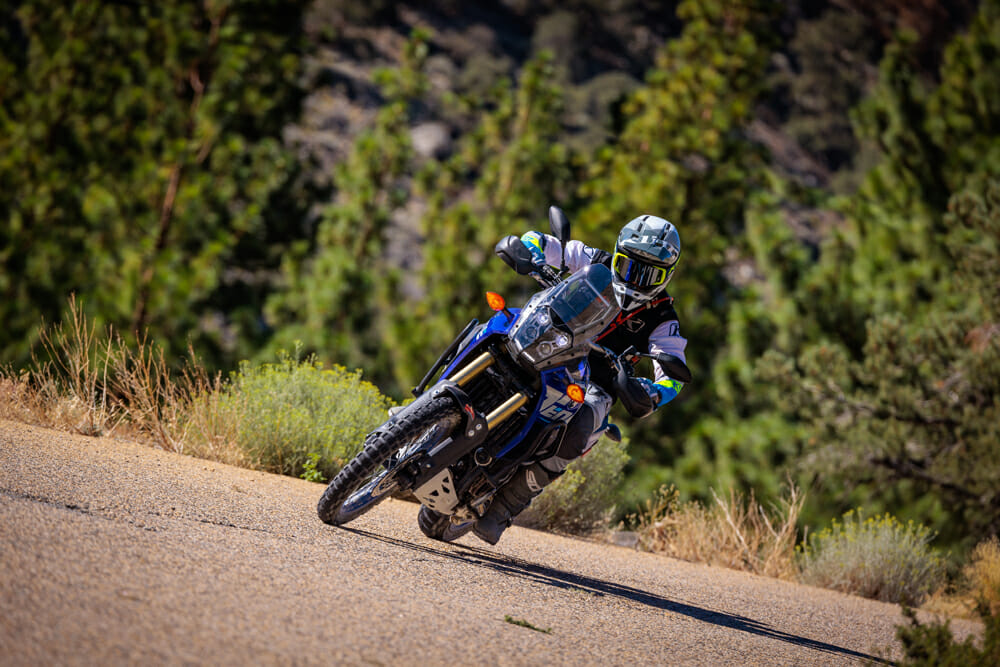
Side By Side
Honda Africa Twin vs. Yamaha Tenere 700
Apart from their obvious technological and displacement differences, the Africa Twin and Tenere 700 are very comparable to those in the ADV market.
Clearly, the Africa Twin is the premium offering here with more of everything and is ready for bigger days on and off the road. This includes suspension specs and travel and fuel capacity. The AT features a 45mm fork with 9.1 inches of travel compared to the T7’s 43mm units at 8.3 inches. The rear follows suit, with Honda enjoying 8.7 inches versus Yamaha’s 7.9 inches. For fueling, the Africa Twin holds five gallons, and the Yamaha 4.1.
Following the Africa Twin premium theme, the entire cockpit interface is living in full color, whereas the Tenere 700 is a cost-appropriate shade of dull. This flash comes at a cost, as the Africa Twin’s electronics are massively complicated to manipulate for first-timers, whereas the Tenere 700 is foolproof because you simply cannot change things. The most complicated thing about the Tenere 700 dash is switching it to display kilometers instead of miles and vice-versa.
Outside the rider interface, the Honda Africa Twin’s build is simply higher level. The industry’s nicest turn signals are on-board, as is the entire suite of electronic tools like cruise control. The Tenere 700 has the industry’s most laughable floppy blinkers by comparison and, once again, has no electronics to speak of.
When it comes to purchasing here, you absolutely get what you pay for. Honda brings almost $15,000 worth of adventure bike to the table, and Yamaha brings you a capable world-traveler at a price closer to 450cc motocross bikes than adventure-class machines. The value you get out of the purchase will entirely depend on what you expect you’re getting.
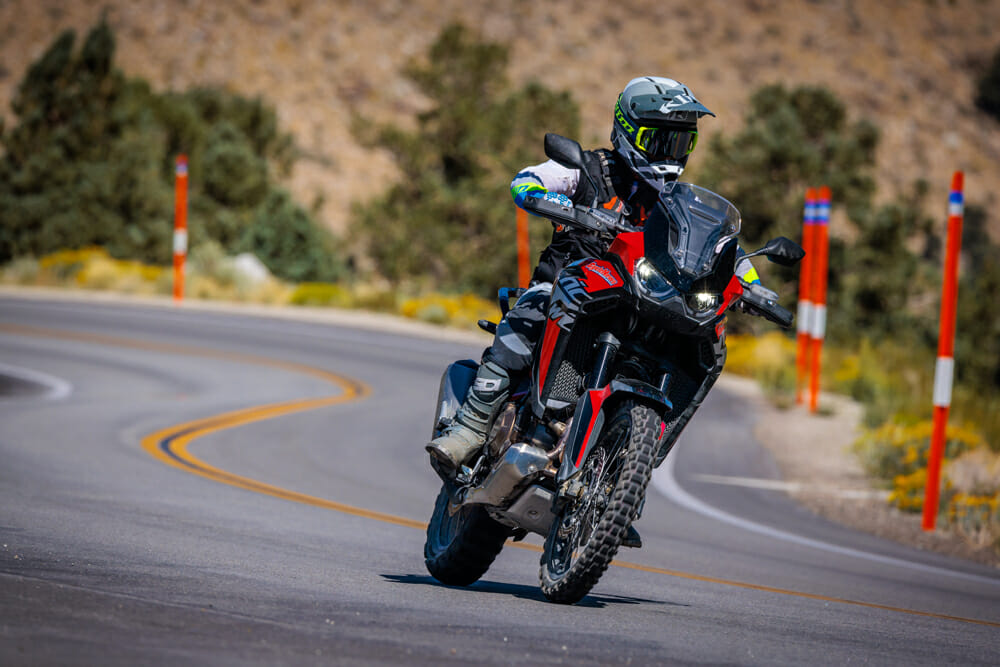
On The Throttle
Honda Africa Twin vs. Yamaha Tenere 700
The on-paper stuff is nice to dig through as you consider a new bike purchase. But nothing will tell you more about the character of a bike than simply riding them. Luckily for you, I took these two bikes into the Bishop, California, high-country, ripped paved roads, climbed rocky passes and explored sandy single track looking for standout surprises and vulnerable bits to report. I threw these bikes at an array of test pilots from expert to novice, and the results weren’t necessarily surprising, but they were telling.
There are three or four things that really define these bikes’ place in the ADV world. First, the Honda engine performance and chassis shine across the board. From paved-road descents and fire-road trips, the Africa Twin has an extremely balanced chassis, a premium suspension feel, and a wonderful power delivery. It really rips and can handle a surprising amount of off-road abuse in comparison. The transmission is happy at speed and shifts with ease whenever you need it. The fueling is spot on, and the bike rarely feels out of its element. The biggest hits the Africa Twin takes are ergonomically off-road in very technical terrain and with final gearing in the same.
If you’re going to climb challenging mountain passes or two-track traverses on the regular, investing in a final drive gearing change on the Africa Twin is advised. It’s simply pulling too much gearing for slow going. The bike is constantly in first gear, wanting to roll faster than the pilot in the most technical areas. At the same time and in the same place, the cool-looking fuel tank shape starts pushing your legs away from the bike. This is where the AT hits its off-road comfort limit—slow-going and steep expert-level terrain. The bike handles it, but it’s not as easy as it could be. Aggressive downhill off-road is surprisingly good for more advanced riders, but the ergonomics and overall size and height of the Africa Twin make it more intimidating for novice pilots, for sure.
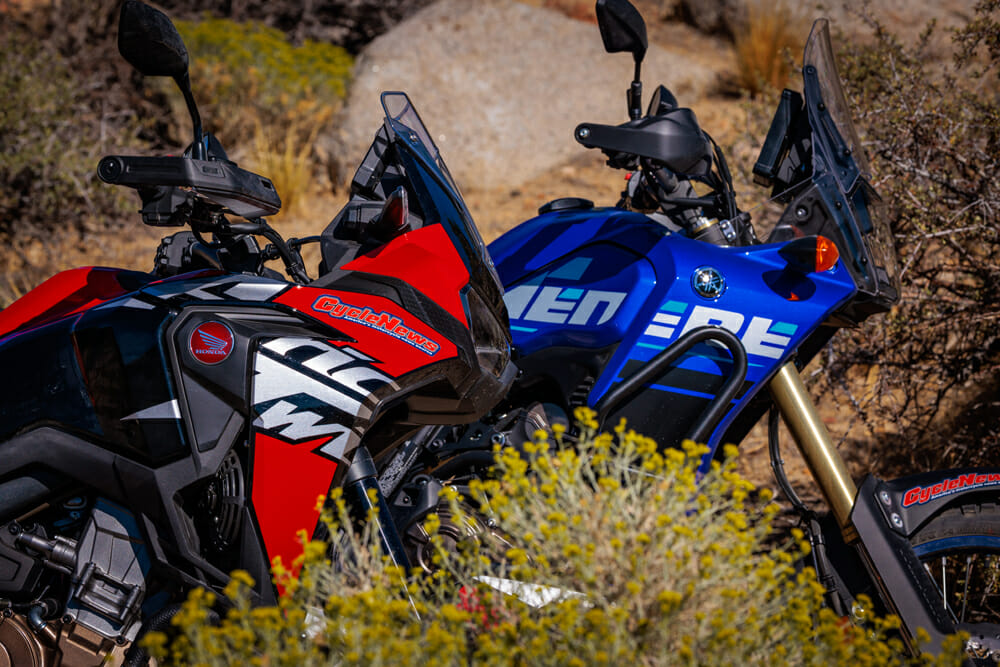
The Yamaha Tenere 700 is, not surprisingly, on the opposite end of the spectrum. This bike is very comfortable all around with a softer edge. From straight-lining it on highways to arcing two-track turns, it’s hard to fault a T7 ride. It’s simply easy.
Its build quality is more utilitarian and analog, with total performance to match. It shines in the steeper, tighter stuff and inspires confidence in all areas except outright power delivery to get you up and over a ledge or obstacle. At elevation (we rode upwards of 9000 feet regularly), the power output gets anemic, and lofting the front wheel at all seems like a faraway dream. Traction is nice, but overall, grunt starts to miss. Still, the lower stature, softer suspension and power delivery all bring an easier bike for beginners—even if it’s a bit boring for advanced riders.
The gearbox on the T7 is also on the flip side. Here, you’re shifting at speed, up to sixth quickly, as the gearing catches up to each space in a hurry. And the quality of shifts isn’t at Africa Twin level. It feels clunky in comparison. This shows its ugly head primarily on-road where you’re downshifting for twisties and accelerating into the next under load. The Tenere 700 would rather not be a road racer or shift too quickly. Plus, the braking performance doesn’t want to be pushed here, either. We’ve harped on about the Tenere 700’s soft braking performance before. And while it seems like it’s getting significantly better, almost every bike in the market slows better.
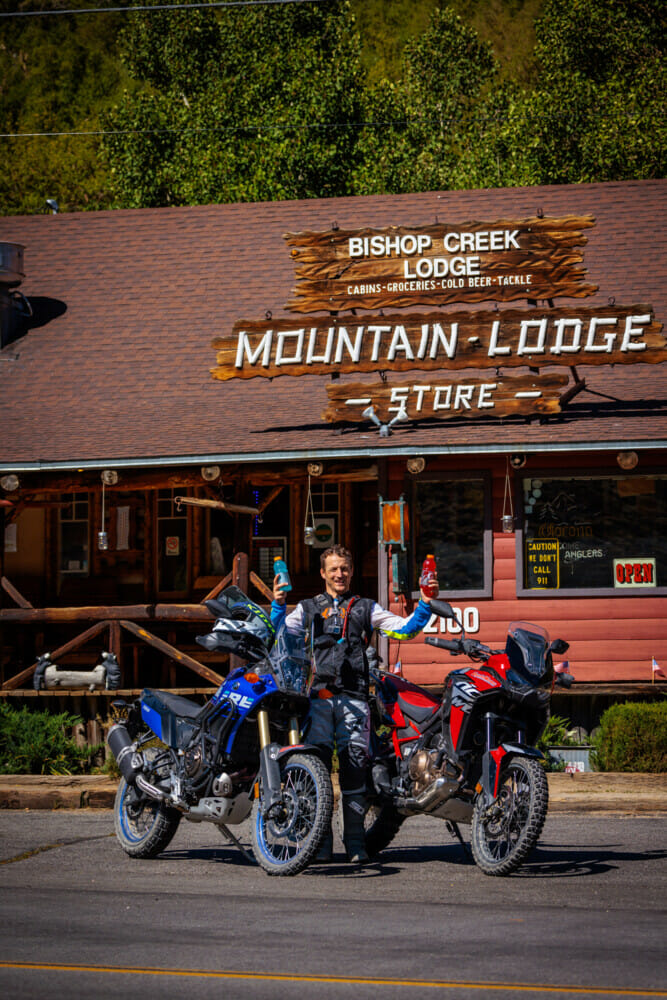
The Final Assessment
Honda Africa Twin vs. Yamaha Tenere 700
As these two bikes sit in my garage, they are both very easy to recommend to people. You can’t go too wrong picking a Honda Africa Twin or Yamaha Tenere 700. At their current pricing, you can feel good about your purchase for a long time. The Africa Twin seems to be winning the long game here with anything you could want for a reasonable price. The bike feels like a $15,000 motorcycle when you live with it. And I expect it to be the same price with the same specs for a couple years, at least. Maybe climbing to $16,000 as costs continue to rise in the next couple of years.
The Tenere 700 has a bit of price equity sitting in its current state in the market. Being the cheapest bike in a segment isn’t always a good thing, but Yamaha can continue to be an amazing choice here if the pricing gap doesn’t close. However, as more bikes come into play in the T7’s world (the upcoming Honda Trans Alp being a big one), it will have to either continue being a price winner and solidly own the analog world or step up and bring some more performance to the table.
The bottom line: You don’t need to pick midsize, full-size, or any-size adventure bike these days. It just needs to be your size. How do you know your size? Look at where you’re realistically going to ride and how big your rides will be. That will likely answer it for you. CN
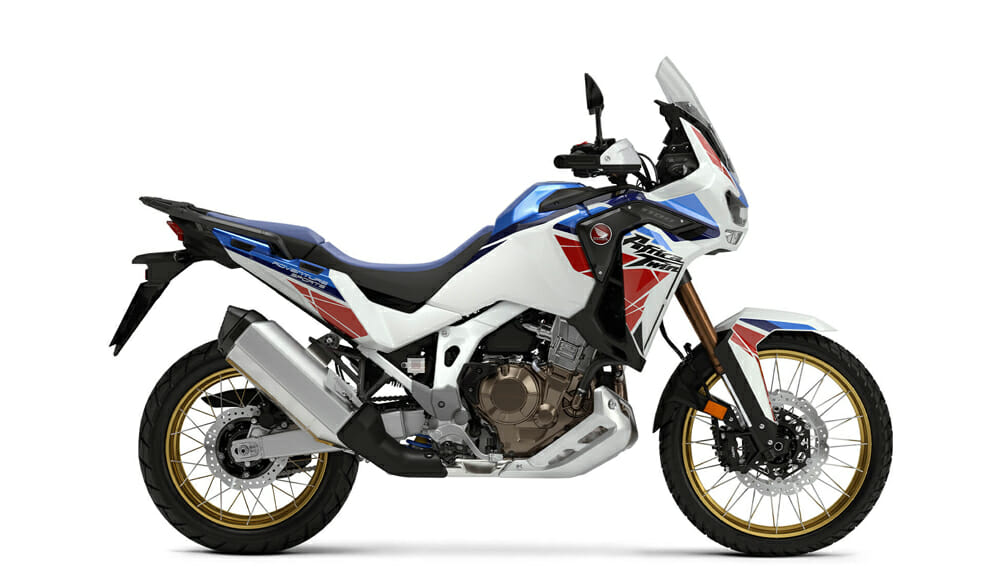
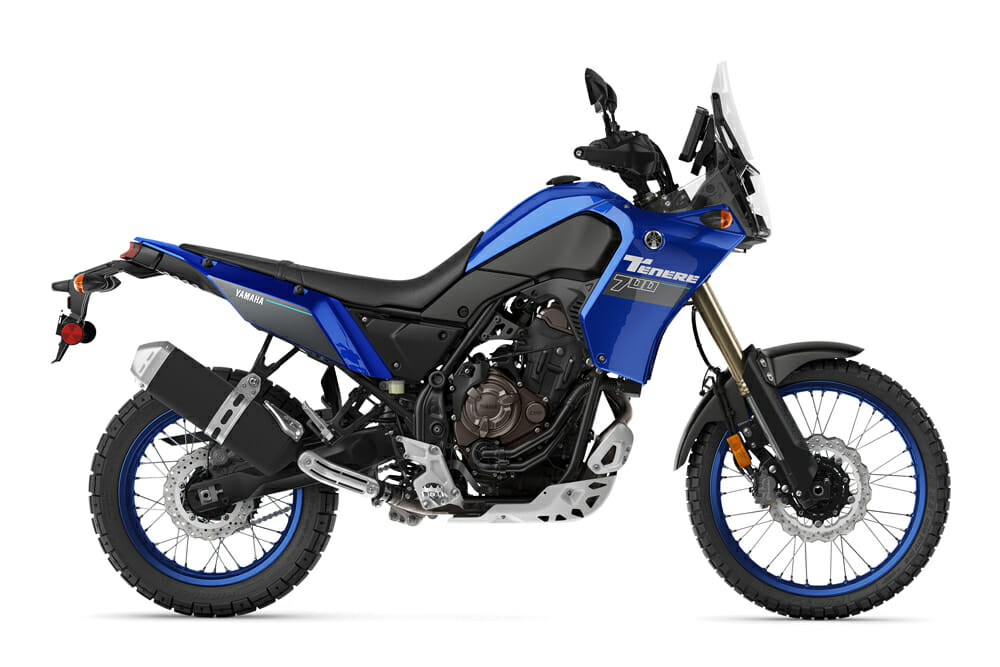
Honda Africa Twin / Yamaha Tenere 700 Specifications
| MSRP: | $14,499/$10,499 |
| Engine: | Parallel-twin / Parallel-twin |
| Displacement: | 1084cc / 689cc |
| Valvetrain: | SOHC 8 valves Unicam / DOHC 8 valves |
| Bore x Stroke: | 92 x 81.5mm / 80 x 68.6mm |
| Induction: | PGM-FI Throttle by Wire / EFI Cable Throttle |
| Rider Aids: | Yes / No |
| Transmission: | 6-speed / 6-speed |
| Front Suspension: | 45mm inverted fork, fully adj. / 43mm inverted fork, fully adj. |
| Rear Suspension: | Single shock Pro-Link, fully adj. / Single shock |
| Front-Wheel Travel: | 9.1 in. / 8.3 in. |
| Rear-Wheel Travel: | 8.7 in. / 7.9 in. |
| Front Brake: | Dual 310mm disc, ABS / Dual 282mm disc, ABS |
| Rear Brake: | Single 256mm disc, ABS / Single 245mm disc, ABS |
| Front Tire: | 90-90R-21 in. / 90-90R21 in. Pirelli Scorpion Rally STR |
| Rear Tire: | 150/70R-18 in. / 150/70R18 in. Pirelli Scorpion Rally STR |
| Seat Height: | 34.3-33.5 in. / 34.4 in. |
| Wheelbase: | 62.0 in. / 62.8 in. |
| Weight (curb, claimed): | 505 lbs. / 452 lbs. |
| Fuel Capacity: | 6.5 gal. / 4.2 gal. |
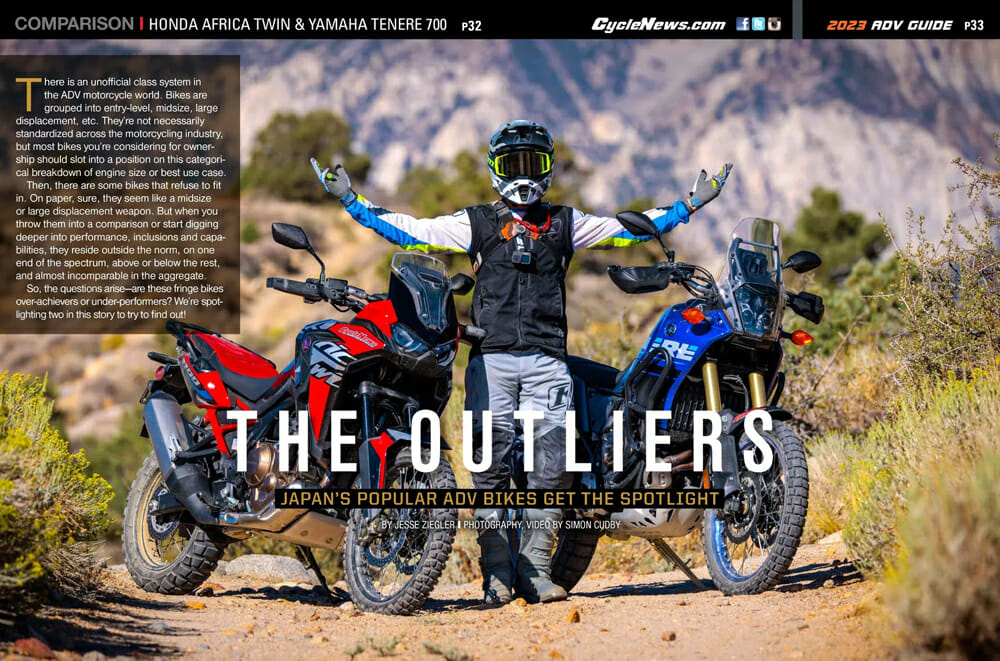
Click here to read the Honda Africa Twin & Yamaha Tenere 700 Comparison in the Cycle News Digital Edition Magazine.
Click here for the latest Cycle News Adventure motorcycle reviews and news.
Click here for more Honda motorcycle reviews and news.
Click here for more Yamaha motorcycle reviews and news.
